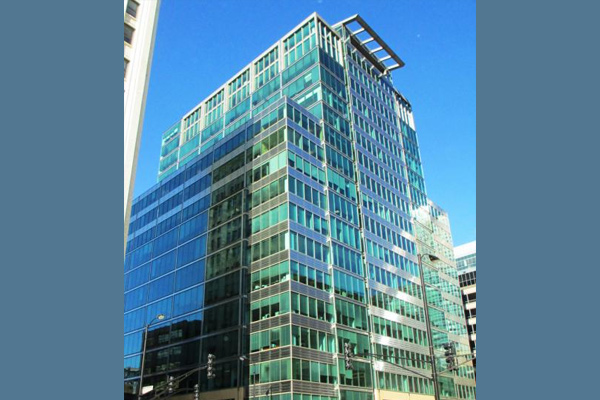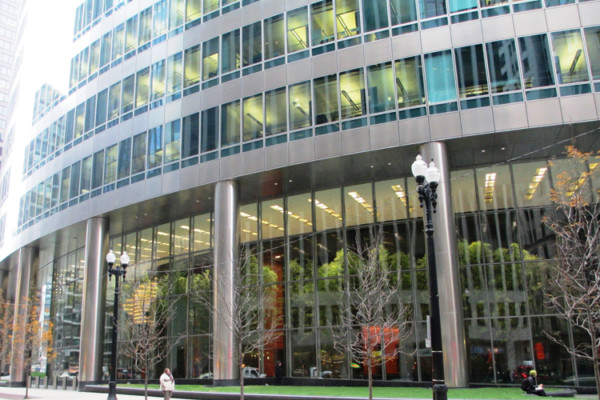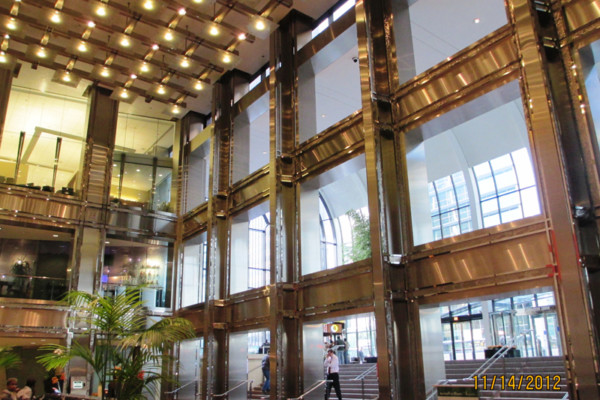Stainless Steel Cleaning and Restoration
Stainless steel is a classic material in architecture that truly stands the test of time. Although it has been used for complete curtain wall systems, it is more commonly used on distinct architectural features in lobbies and common areas of commercial buildings. The most widely used grades of stainless steel for architectural purposes include 304 and 316. In urban environments, 316 provides greater corrosion resistance.
Like anodized aluminum, stainless steel is resilient and can be abrasively cleaned to remove corrosion, pollutants and staining in advanced stages of exposure. In light and moderate accumulations of contaminants and pollutants, more basic cleaning methods can be utilized. In all cases, neutral detergent cleaners should be used in the cleaning process. There are many commercial chemical cleaners claiming to be designed for cleaning of stainless steel; however they can be harmful to other materials on the building.
Regardless of finish, regular and scheduled cleaning of stainless steel is recommended to maintain the intended appearance and to preserve its built-in corrosion resistant capabilities. The common misconception is that architectural stainless steel will not rust or corrode when exposed to everyday atmospheric conditions. This is simply not the case. Without a technically sound cleaning program and extended exposure, a stainless steel finish can develop staining and corrosion.


